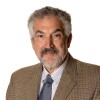Some people believe in the lost continent of Atlantis and in unidentified flying objects (UFOs). Others worry about an 18th-century secret society called the Bavarian Illuminati or a mythical Zionist-Occupied Government secretly running the United States.
What if these disparate elements shared beliefs, joined forces, won a much larger audience, broke out of their intellectual and political ghetto, and became capable of challenging the premises of public life in the United States? This is the frightening prospect, soberly presented by Michael Barkun in his important, just-published book, A Culture of Conspiracy: Apocalyptic Visions in Contemporary America (University of California Press, $24.95).
To understand the novelty of this potential requires knowing something about the history of conspiracy theories.
Fears of a petty conspiracy — a political rival or business competitor plotting to do you harm — are as old as the human psyche. But fears of a grand conspiracy — that the Illuminati or Jews plan to take over the world — go back only 900 years and have been operational for just two centuries, since the French Revolution. Conspiracy theories grew in importance from then until World War II, when two arch-conspiracy theorists, Hitler and Stalin, faced off against each other, causing the greatest bloodletting in human history.
This hideous spectacle sobered Americans, who in subsequent decades relegated conspiracy theories to the fringe, where mainly two groups promoted such ideas.
- The politically disaffected : blacks (Louis Farrakhan, Cynthia McKinney ), the hard right (John Birch Society, Pat Buchanan), and other alienated elements (Ross Perot, Lyndon LaRouche ).Their theories imply a political agenda but lack much of a following.
- The culturally suspicious : these include “Kennedy assassinologists,” “ufologists,” and those who believe a reptilian race runs the earth and alien installations exist under the earth’s surface. Such themes enjoy enormous popularity (a year 2000 poll found 43% of Americans believing in UFOs) but carry no political agenda.
The major new development, reports Mr. Barkun, a professor of political science in the Maxwell School at Syracuse University, is not just an erosion in the divisions between these two groups, but their joining forces with occultists, persons bored by rationalism. Occultists are drawn to what Mr. Barkun calls the “cultural dumping ground of the heretical, the scandalous, the unfashionable, and the dangerous” — such as spiritualism, Theosophy, alternative medicine, alchemy, and astrology.
Thus, the author who worries about the Secret Service taking orders from the Illuminati is old school; the one who worries about a “joint Reptilian-Bavarian Illuminati” takeover is at the cutting edge of the new synthesis. These bizarre notions constitute what the late Michael Kelly termed “fusion paranoia,” a promiscuous absorption of fears from any source whatsoever.
The connection of conspiracy theorists and occultists follows from their common, crooked premises. First, “any widely accepted belief must necessarily be false.” Second, rejected knowledge — what the establishment spurns — must be true.
The result is a large, self-referential network. Flying saucer advocates promote anti-Jewish phobias. Anti-Semites channel in Peru. Some anti-Semites see extraterrestrials functioning as surrogate Jews; others believe the Protocols of the Elders of Zion are the joint product of “the Rothschilds and the reptile-Aryans.” By the late 1980s, Mr. Barkun found that “virtually all of the radical right’s ideas about the New World Order had found their way into UFO literature.”
Ufology’s wide appeal transmits these political ideas to a large new audience of ideological omnivores, informing them that September 11 was either an Illuminati operation or the Assassins (a medieval Muslim group) attacking Freemasons.
What does this craziness all amount to? Mr. Barkun, who reads widely in this backstairs literature, argues that in recent years “ideas once limited to fringe audiences became commonplace in mass media” and this has inaugurated a period of “unrivaled” millenarian activity in the United States. He worries of the “devastating effects” this frenzy could wreak on American political life — and by extension, around the world.
I am more optimistic, trusting the stability of a mature democracy and noting that Americans have survived previous conspiracist bouts without much damage. But nonsensical, ugly, and pernicious ideas do not fail of their own accord ; they need to be fought against and rendered marginal. The task starts with recognizing that they exist, then arguing against them.







